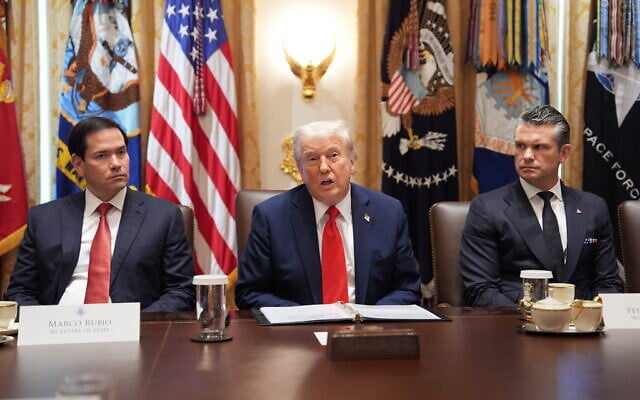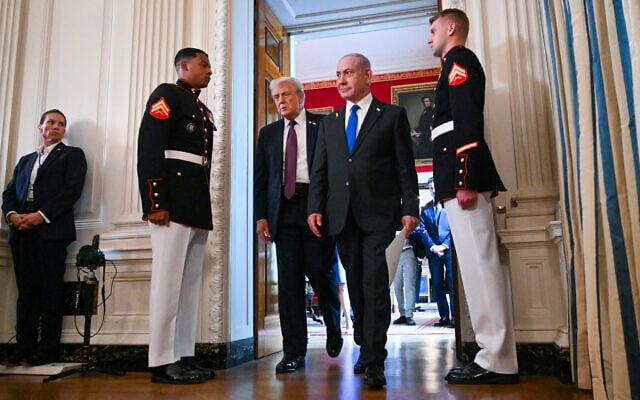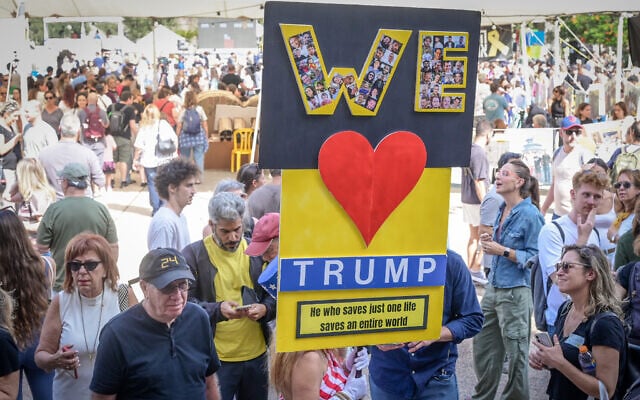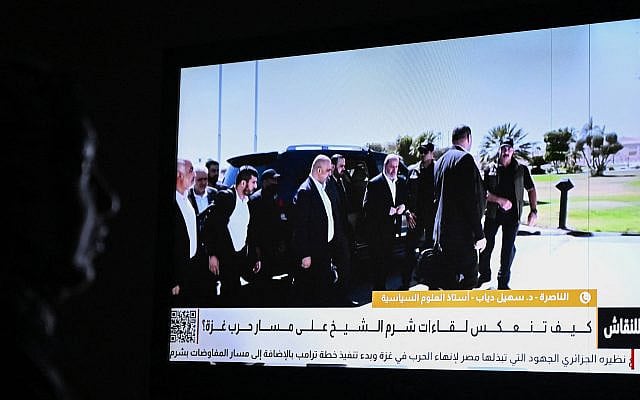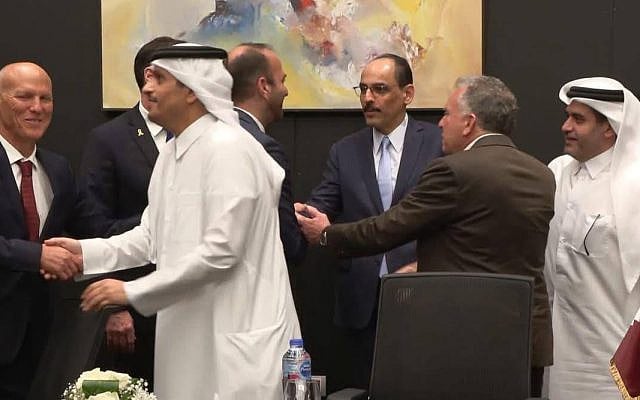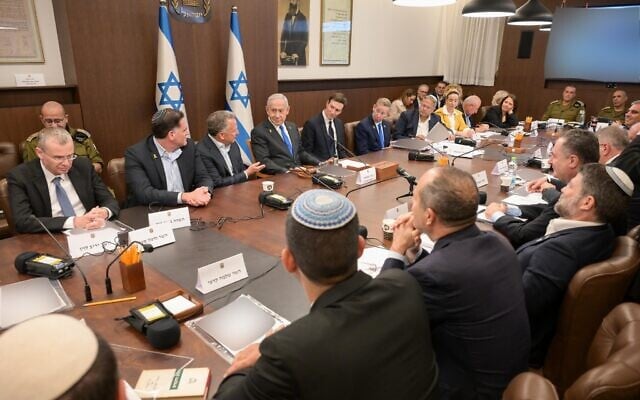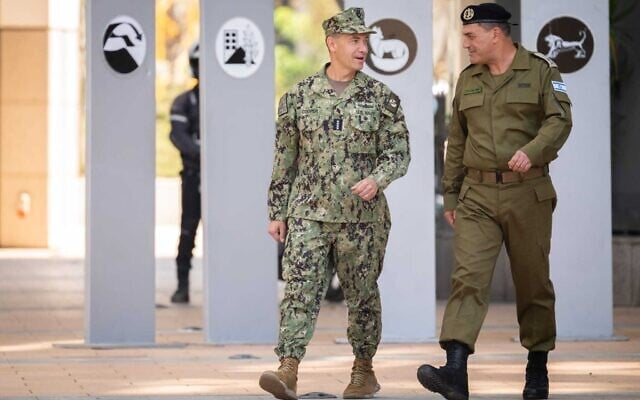

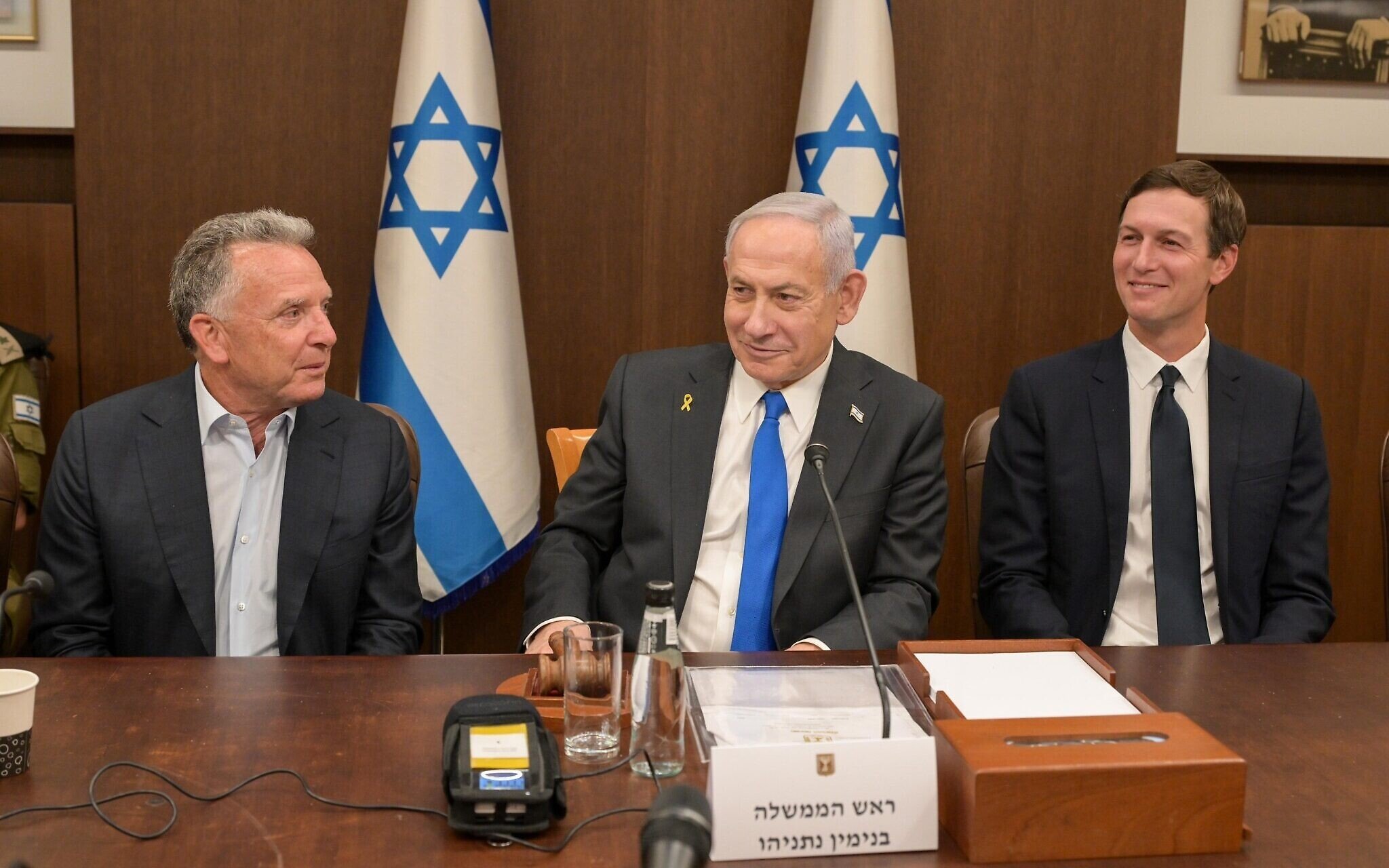
In the days following Israel’s September 9 missile strike targeting Hamas’s leaders in Doha, as the limited nature of the results began to crystallize, Prime Minister Benjamin Netanyahu chose to double down on the decision, which had galvanized the entire region against him like never before.
“It didn’t fail, because it had one central message, and we considered it before we launched it, and that is, you can hide, you can run, but we’ll get you,” the premier asserted, while standing alongside US Secretary of State Marco Rubio.
Several weeks later, though, Netanyahu was in the Oval Office, holding a phone handed to him by US President Donald Trump and reading a scripted apology to Qatari Prime Minister Mohammed Abdulrahman Al Thani, who was on the other line.
“It was the sort of thing that mature people do. That got us some leverage,” a senior US official said, as he reviewed how the Trump administration managed to broker an agreement ending the Gaza war after two years.
The Doha strike initially saw a deterioration in conditions for an agreement, with some hostage families who traveled to meet with Trump officials in Washington leaving town convinced that the administration was drifting away from their issue.
The strike “caused a lot of angst within the Arab world,” said the senior US official involved in the negotiations during a briefing with reporters on Thursday. “There was a sense that it shouldn’t happen. There was a sense that if it did happen, it could happen to other countries.”
But it was during that period of doubt that US special envoy Steve Witkoff and his effective predecessor during Trump’s first term, Jared Kushner, began crafting a plan aimed at ending the war in Gaza and rebuilding trust between Israel and its Middle Eastern neighbors.
Because while Witkoff and Kushner recognized a mounting, regional-wide anger with Israel, they also “began to detect that Hamas had had enough.”
“They fought hard. But this was a conflict that was [affecting] every family in Gaza… Gazans don’t just blame Israel for this conflict. They, in large part, were blaming Hamas for it. We began to sense that and turn that into leverage,” the senior US official said.
Determined to craft a plan that leveraged the crisis, Witkoff and Kushner borrowed principles and ideas from previous hostage deal proposals along with existing frameworks for ending the war, while consulting closely with Al Thani, who was fully on board with the effort following Netanyahu’s apology, the senior US official said.
The resulting document was then presented on the sidelines of the UN General Assembly by Trump to US allied countries in the Arab and Muslim world, whose support will be needed in the post-war stabilization and management of Gaza.
The plan was adapted to take their feedback into account, and a similar revision process unfolded after the document was shared with Netanyahu over the last weekend of September.
The 20-point proposal was then unveiled by the White House as Trump stood beside Netanyahu, who moments prior had agreed not only to apologize to Qatar but to back a plan that could well lead to the collapse of his government, as it envisions an immediate end to the war, a gradual Israeli withdrawal from Gaza and the creation of a potential pathway to a Palestinian state.
Explaining why the US was able to get Netanyahu on board with ending the war — something the Biden administration was unable to do, despite such a result arguably being more desired by Democrat voters, a senior Trump aide who was also on the Thursday briefing touted his boss’s “proven formula” that has seen him reject the idea that the president needs to be a “middle of the roader.”
Trump has “stood shoulder to shoulder with Israel 100 percent. And because of that, he’s been able to help guide them in the right direction,” the aide said. “Israel has a lot of trust in President Trump that he’s not going to ask [it] to do anything that would compromise [its] security.”
With Israel on board, Trump only needed several days and an ultimatum for Hamas to follow suit.
“We felt that Hamas was at a place… where [it] was looking at the hostages less as an asset and more as a liability,” the senior US official said.
The terror group issued a statement on October 3 welcoming parts of the deal — most critically, the US plan’s envisioning of the up-front release of all remaining hostages — while indicating that it had disagreements with subsequent phases regarding the “day after” in Gaza.
While Netanyahu read Hamas’s reply as an effective “No,” Witkoff and Kushner looked at it more positively, believing that there was enough there for them to work with.
Trump asked Witkoff and Kushner ‘What are the odds of a deal?’
They responded, “‘100%… Because we can’t afford to fail, so we have no choice but to get a deal done,'” the senior Trump aide said.
Trump told them, ‘Anything you need me to do, anything you need me to stand behind. You have the full authority to go and do what needs to be done to make a deal,” the senior aide recalled. “That really gave us a lot of room to maneuver to get the final details across the line.”
Mediators from Qatar, Egypt and Turkey were then dispatched to Sharm el-Sheikh, Egypt, where they held technical talks with negotiating teams from Israel and Hamas on Monday and Tuesday.
Those talks progressed well, with the mediators managing to convince Hamas that Trump was prepared to stand behind every principle of the 20-point plan, including its envisioning of Israel’s complete, albeit phased, withdrawal from Gaza, the senior US official said.
“Everyone will be treated fairly,” Trump has several times emphasized over the past month, as he has sought to keep Hamas on board with a plan that sees it lose what it long thought was its best leverage (the hostages) during the first 72 hours of the deal.
“He wanted both sides to understand that he was going to enforce good conduct here. That was a critical and overarching message that we were there to talk about, and it was very well received,” the senior US official said, adding that Trump was very involved in the Egypt talks from afar, repeatedly phoning in to speak with the mediators.
With momentum building, Witkoff and Kushner flew to Sharm el-Sheikh, arriving early Wednesday morning and immediately joining the negotiations along with top officials from all parties.
Critically, the sides agreed to separate the hostage release from the subsequent parts of the 20-point plan, leaving those thornier issues pertaining to the post-war management of Gaza for later rounds.
This paved the way for a breakthrough to be reached by Wednesday evening, as Middle Eastern mediators walked between ballrooms inside the same conference center where Israeli and Hamas negotiating teams were posted.
“We were going for 20 straight hours, and toward the end of that, we began to sense that everybody had moved to a place in the middle where we could see that there was a deal here,” the senior US official said. “Once everybody could see the line, they wanted to cross it.”
Enough consensus had developed around all of the key issues surrounding the hostage-prisoner swap and Israel’s initial pull-back from Gaza that after 2 a.m., Witkoff and Kushner determined an announcement could be made.
Minutes later, one went up on Trump’s Truth Social account.
Celebrations in Gaza and Israel were immediate, and the excitement extended to Sharm el-Sheikh, where surreal scenes unfolded of Qatari mediators embracing their Israeli counterparts, as if the Doha strike hadn’t happened exactly one month prior.
Several hours later, Witkoff and Kushner travelled to Cairo, where they met with Egyptian President Abdel-Fattah el-Sissi. “We told him that we were grateful for his leadership, but… we were going to need him on the implementation phase,” the senior US official said.
By Thursday evening, the pair had landed in Israel, where they immediately set out for back-to-back meetings with President Isaac Herzog and Netanyahu shortly before the latter was slated to hold a cabinet meeting to ratify the agreement signed in Sharm el-Sheikh.
Witkoff offered to present his case in favor of the deal to the cabinet and Netanyahu jumped on the opportunity.
The two American officials caught the ministers by surprise, as Netanyahu hadn’t let them know in advance that the pair would be joining, but they were still welcomed with an extended applause.
The senior US official clarified that there were “plenty of differences of opinion” voiced by “hardliners,” but “there were also people who wanted to see the hostages come home above all else, and we explored different pathways to reach good compromises.”
After an over-hour-long appearance, Witkoff and Kushner left. The cabinet went on to ratify the agreement shortly after midnight Thursday-Friday.
“People are relieved and joyful to see this end. Most people in Israel either have children or neighbors or friends who are fighting in the war,” said the senior Trump aide, who briefed reporters alongside the senior US official, both on condition of anonymity.
“With that being said, there’s real fear there about what will happen next. Will Gaza again pose a threat? If the mechanism that we create and everyone behaves and works properly, hopefully, we can create a new paradigm that can lead to a more peaceful and prosperous place in the future,” the senior Trump aide added.
Witkoff and Kushner will remain in Israel through the hostage releases early next week to make sure that the deal is properly implemented.
“There are still a lot of ways that this can go wrong, so we’re staying on top of the details to make sure everyone fulfills their obligations and that any misunderstandings are quickly adjudicated,” the senior Trump aide said.
“We want to make sure that we get to the withdrawal, the ceasefire, and then we get to a place for the hostages to return home and for the exchange to be done. Then we’ll go into the next phase, which is figuring out what comes next in Gaza,” the Trump aide continued. “We have a lot of concepts and ideas that we’ve been trying to get developed for a long time, that now we’ll have to get them operationalized.”
One of the first steps in that process will be deploying around 200 US Central Command soldiers to establish a task force outside Gaza, aimed at supporting the International Stabilization Force (ISF) that the Trump plan envisions will gradually replace the IDF throughout the Strip.
Witkoff had CENTCOM Chief Brad Cooper join the talks, and the admiral managed to quickly win over the other parties when he informed them he could have the task force operational within two and a half weeks, the senior US official said.
“We’re already talking to multiple governments about standing up that ISF force,” the senior US official said, without naming the volunteer countries. Indonesia is the only country to date that has publicly offered to send troops to Gaza.
“Then there will be discussions, and we’ll see if there is a true pathway for decommissioning the military installations in Gaza and the heavy arms,” the Trump aide added.
The Trump aide was unmoved by Hamas’s statements rejecting the idea of disarmament. “I wouldn’t pay too much attention to public statements from anyone in the Middle East. It’s more about what people are saying privately and about what they’re actually going to do.”
While the US hasn’t secured financial commitments from its Arab and Muslim allies, it has lodged security guarantees from those countries “where they said they were going to stand behind the decommissioning of the weapons” in Gaza.
If the second phase can be advanced, the Trump aide expressed optimism that the Abraham Accords brokered by Trump in his first term can then be expanded.
“October 7, and the war in Gaza created a black cloud over the region and changed a lot of the sentiment regarding Israel,” the aide acknowledged.
Nonetheless, this deal can reverse those dynamics and revive efforts to broker normalization deals between Israel and countries like Saudi Arabia, Indonesia, Qatar, Mauritania, Algeria, Syria and Lebanon, the senior Trump aide maintained.
“Our general message now is that being divided and isolated and balkanized hasn’t worked in the Middle East. It has just led to a lot of victimization, conflict, bad blood, misunderstanding,” he said. “But when there’s communication and when countries have relations, and the people get to know each other and do business together, that’s a better recipe for peace and a foundation for stability.”


